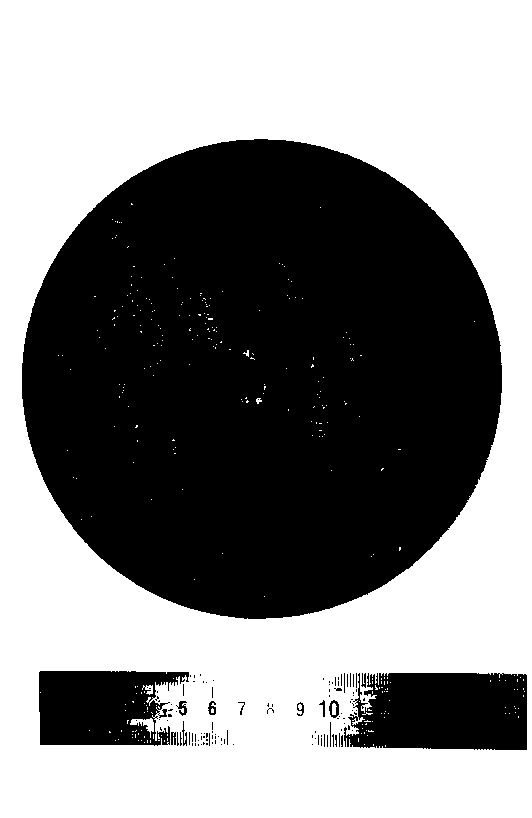Method for preparing biomass materials on basis of cinnamomum longepaniculatum leaf residues
A biomass material, camphor leaf residue technology, which is applied to hollow articles, wood processing appliances, household components, etc. Poor toughness and other problems, to achieve the effect of realizing waste resource utilization and recycling, good economic prospects, and reducing decay and pollution of the environment
- Summary
- Abstract
- Description
- Claims
- Application Information
AI Technical Summary
Problems solved by technology
Method used
Image
Examples
Embodiment 1
[0051] Carry out the glue adjustment implementation process of the present invention as base-material with soybean flour as follows:
[0052] A kind of biomass material preparation method based on camphor leaf residue, comprises steps:
[0053] (1) drying: removing impurities and drying the camphor leaf residue to obtain dry camphor leaf residue;
[0054] (2) pulverizing: the dried camphor leaf slag is pulverized into camphor leaf slag powder for use;
[0055] (3) Glue adjustment: Weigh 50g of soybean powder, 1g of lignin, 0.25g of sodium hydroxide, and 200g of water. Add the soybean powder into the water and stir for 6 to 8 minutes at a heating temperature of 60-75°C. Then add lignin Stir for 8-10 minutes, then add sodium hydroxide and continue stirring for 30-40 minutes to obtain viscose.
[0056] (4) Shaping: Mix camphor leaf residue powder and viscose, knead and press at the same time, the kneading time is 15 to 30 minutes, and the product is ready.
[0057] After stirr...
Embodiment 2
[0059] Carrying out the glue adjustment implementation process of the present invention with starch as base material is as follows:
[0060] In this embodiment, the steps of drying, pulverizing and shaping based on the biomaterial preparation of camphor leaf residue are the same as in Example 1, the difference is that:
[0061] (3) Adjust glue: Weigh 50g starch, 1g lignin, 0.25g sodium hydroxide, 200g water, under the condition of heating temperature of 60-75℃, add starch into water and stir for 6-8min, then add lignin and stir 8 to 10 minutes, then add sodium hydroxide and continue stirring for 30 to 40 minutes.
[0062] During the stirring process, it was found that the starch glue is too sensitive to the temperature during the heating process, and it is easy to lose the viscous state with the temperature rise during the heating process, and at the same time lose the sticky function. Among the 10 preparations of starch glue, 6 times the mixture of starch and water did not a...
Embodiment 3
[0064] Take potassium permanganate as reinforcing agent to carry out the glue adjustment implementation process of the present invention as follows:
[0065] In this embodiment, the steps of drying, pulverizing and shaping based on the biomaterial preparation of camphor leaf residue are the same as in Example 1, the difference is that:
[0066] (3) Glue adjustment: Weigh 50g flour, 1g potassium permanganate, 1g lignin, 0.25g sodium hydroxide, 200g water, add flour into water and stir for 6-8min at a heating temperature of 60-75°C, Then add lignin and stir for 8-10 minutes, then add potassium permanganate and stir for 5-30 minutes, then add sodium hydroxide and continue stirring for 30-40 minutes, and finally add an appropriate amount of defoamer and stir for 2-3 minutes.
[0067] In the comparative example experiment, add potassium permanganate and do not add the stickiness situation of two kinds of glues of potassium permanganate. After comparison, it is found that there is ...
PUM
 Login to View More
Login to View More Abstract
Description
Claims
Application Information
 Login to View More
Login to View More - R&D
- Intellectual Property
- Life Sciences
- Materials
- Tech Scout
- Unparalleled Data Quality
- Higher Quality Content
- 60% Fewer Hallucinations
Browse by: Latest US Patents, China's latest patents, Technical Efficacy Thesaurus, Application Domain, Technology Topic, Popular Technical Reports.
© 2025 PatSnap. All rights reserved.Legal|Privacy policy|Modern Slavery Act Transparency Statement|Sitemap|About US| Contact US: help@patsnap.com



